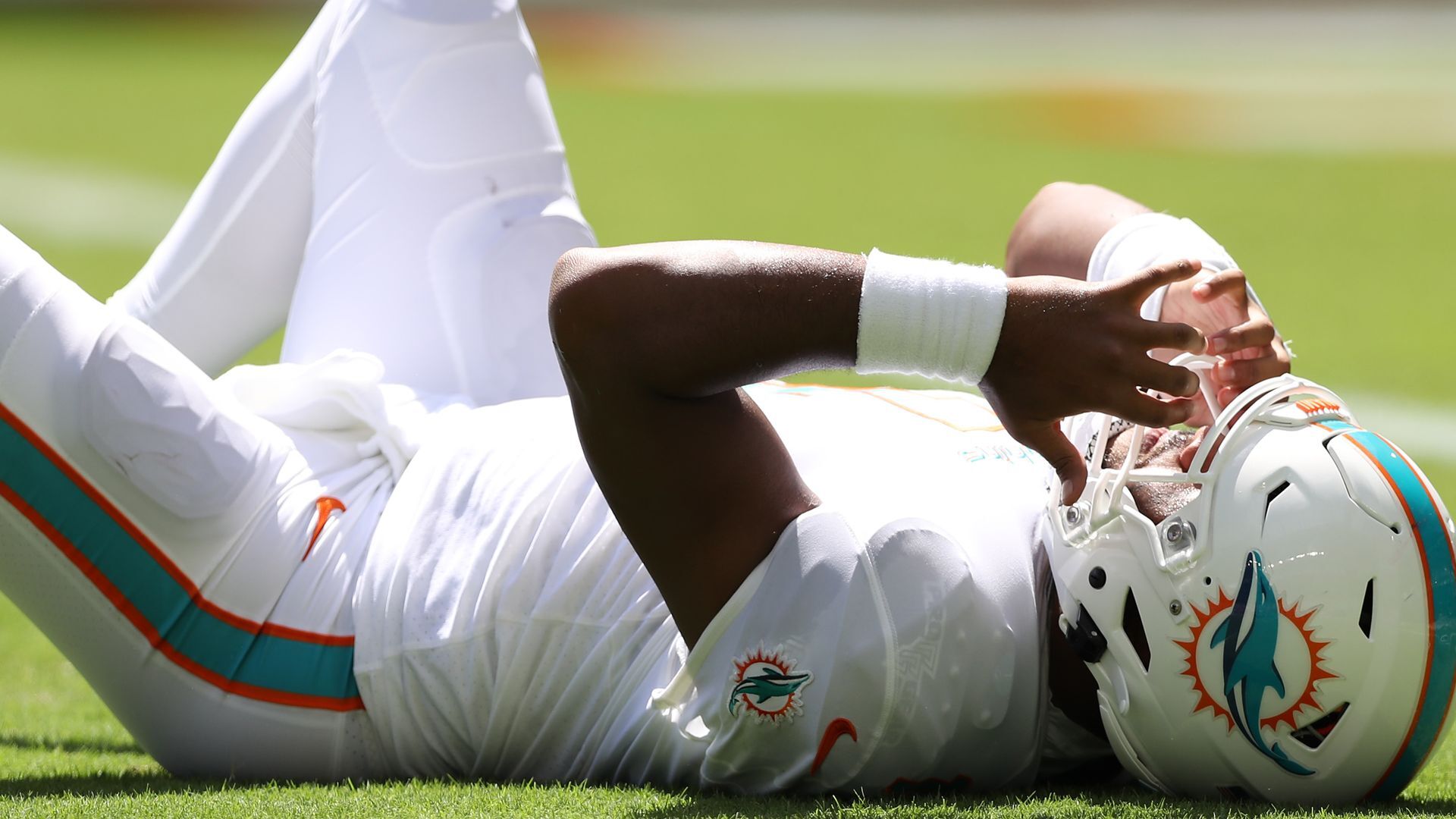
A COMMON, SEEMINGLY INNOCUOUS GESTURE COULD BE A SIGN OF A CONCUSSION AND EXPERTS SAY RECOGNIZING IT COULD BE THE KEY TO REDUCING THE NUMBER OF CONCUSSIONS THAT GO UNDIAGNOSED.
IT’S THE QUICK HEAD SHAKE AFTER A HARD HIT.
THAT MOVEMENT, CALLED THE SPONTANEOUS HEADSHAKE AFTER A KIN-E-MATIC EVENT – WHICH IS APTLY SHORTENED TO “SHAAKE” CAN BE SEEN AMONG ATHLETES ACROSS VARIOUS SPORTS TIME AND TIME AGAIN… BUT IT’S LONG GONE MOSTLY OVERLOOKED AS A SYMPTOM OF CONCUSSION.
TO BETTER UNDERSTAND THE MOVEMENT… RESEARCHERS WITH MASS GENERAL BRIGHAM AND THE CONCUSSION LEGACY FOUNDATION SURVEYED HUNDREDS OF HIGH SCHOOL, COLLEGE AND SEMI-PRO ATHLETES.
THEY FOUND **MOST** OF THE ATHLETES WERE FAMILIAR WITH THE ACTION… AND HAVE EVEN EXPERIENCED IT THEMSELVES, OFTEN MORE THAN ONCE.
IN NEARLY THREE OUT OF FOUR CASES – RESEARCHERS FOUND THOSE WHO EXPERIENCED SHAAKE **DID** GET A CONCUSSION AT THAT TIME.
THEY FOUND THE **CAUSES** OF SHAAKE ARE OFTEN COMMON SYMPTOMS OF CONCUSSION… LIKE DISORIENTATION, CONFUSIONS, AND CHANGES TO SPATIAL PERCEPTION.
HOWEVER, THE HEAD SHAKE BY ITSELF IS **NOT** CONSIDERED A SIGN OF CONCUSSION… LEADING MANY TO GO DANGEROUSLY UNDIAGNOSED.
THE RESEARCHERS BEHIND THE NEW STUDY NOW SAY FORMAL RECOGNITION OF SHAAKE AS A SIGN OF A CONCUSSION COULD HELP IDENTIFY UP TO A THIRD OF UNDIAGNOSED CONCUSSIONS.
THE RESEARCHERS POINT TO A PARTICULARLY NASTY CONCUSSION SEEN IN 20-22 INVOLVING MIAMI DOLPHINS QUARTERBACK TUA TAGOVAILOA SUFFERED IN THEY SAY THE EXAMPLE HIGHLIGHTS HOW ADDING SHAAKE TO PROFESSIONAL CONCUSSION PROTOCOL COULD MAKE A BIG DIFFERENCE.
TAGOVAILOA FELL TO THE GROUND AFTER A HARD HIT. IT WAS ATTRIBUTED TO A PREVIOUS BACK INJURY AT FIRST… BUT HE LATER ENDED UP BEING HOSPITALIZED WITH A CONCUSSION.
THE STUDY’S AUTHORS SAY THAT **COULD** HAVE BEEN AVOIDED… IF SHAAKE WERE PART OF THE PROTOCOL.
WHILE THAT WAS **NOT** ADDED IN THE WAKE OF THE QUARTERBACK’S 20-22 INJURY… THE N-F-L **DID** UPDATE THE LEAGUE’S CONCUSSION PROTOCOL.
THE N-F-L’S CHIEF MEDICAL OFFICER SAYS THE LEAGUE REGULARLY REVIEWS NEW RESEARCH – AND RELEASED A STATEMENT IN RESPONSE TO THIS STUDY READING IN PART:
“OUR CONCUSSION PROTOCOL – A CONSERVATIVE PROCESS DEVELOPED FROM INTERNATIONALLY ACCEPTED GUIDELINES – IS REVIEWED ANNUALLY TO ENSURE PLAYERS ARE RECEIVING CARE THAT REFLECTS THE MOST UP-TO-DATE MEDICAL CONSENSUS ON THE IDENTIFICATION, DIAGNOSIS, AND TREATMENT OF CONCUSSIONS.”









